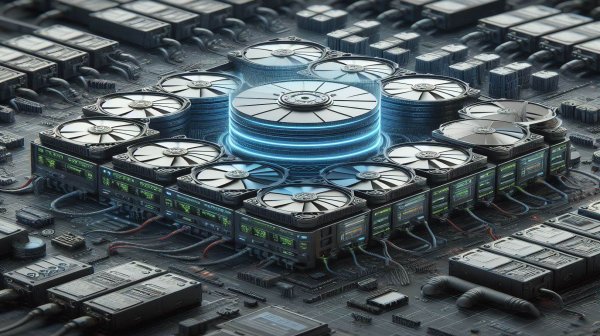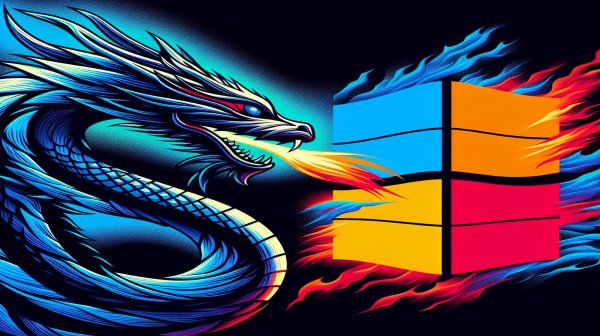Data. It’s the lifeblood of our digital world, and keeping it safe is paramount. But with ever-growing storage needs and the constant threat of drive failure, traditional single disks just don’t cut it anymore. Enter RAID, the guardian angel of data storage!
RAID (Redundant Array of Independent Disks) combines multiple disks into a single logical unit, offering a buffet of benefits – from blazing-fast speeds to ironclad redundancy. But with different RAID levels available, choosing the right one can be a head-scratcher. Fear not, data warriors! This blog post will dissect the most popular RAID configurations: RAID 0, RAID 1, RAID 01 (also known as RAID 10), and RAID 5, making you a RAID selection sensei.
The Need for Speed: RAID 0 (Striping)
Imagine a highway with multiple lanes. RAID 0 splits your data across all your disks, allowing for parallel reads and writes, just like those extra lanes. The result? Supercharged performance! Ideal for tasks like video editing where speed is king. However, this RAID party comes with a dark side: ZERO redundancy. A single disk failure spells disaster for your data. Use RAID 0 with caution, only for non-critical data or when you have a robust backup plan in place.
Pros:
- Blazing-fast data transfer speeds
- Utilizes 100% of storage capacity
Cons:
- No data redundancy – a single drive failure = data loss
- Not ideal for critical data
Cost:
- Relatively low (uses all available storage)
Mirrored Magic: RAID 1
Think of RAID 1 as data cloning. It creates an exact copy of your data on a separate disk, mirroring your information for ultimate security. If one drive kicks the bucket, the other keeps your data safe and accessible. This makes RAID 1 perfect for safeguarding critical data like financial records or irreplaceable family photos. However, this data fortress comes at a cost: reduced storage capacity. With half the storage usable, RAID 1 might not be ideal for massive datasets.
Pros:
- Excellent data redundancy – complete data protection if one drive fails
- Easy to rebuild after a drive failure
Cons:
- Only utilizes 50% of storage capacity
- Can be expensive for large storage needs
The Best of Both Worlds: RAID 01 (RAID 10)
RAID 01, also known as RAID 10, combines the best of striping (RAID 0) and mirroring (RAID 1). It stripes data across multiple mirrored sets, offering lightning-fast performance with outstanding redundancy. Think of it as a double-layered data shield – even if one or two drives fail within a mirrored set, your data remains secure. This RAID configuration is a champion for mission-critical applications where both speed and security are essential. But be warned, RAID 10 requires a significant number of disks and comes with a heftier price tag.
Pros:
- Excellent data redundancy – high tolerance for drive failures
- High-performance data transfer speeds
Cons:
- Requires a significant number of disks
- Reduced usable storage capacity (compared to total storage)
- Higher cost due to increased disk requirements
Parity Power: RAID 5
RAID 5 offers a clever way to achieve redundancy with just a single parity drive. It stripes data and parity information across all the disks in the array. If a drive fails, the missing data can be rebuilt using the parity information and the remaining drives. While RAID 5 provides good redundancy and decent performance, it’s important to note that rebuild times can be lengthy, especially for large arrays. Additionally, during a rebuild, another drive failure can lead to complete data loss.
Pros:
- Good data redundancy with a single parity drive
- Utilizes a higher percentage of storage capacity compared to RAID 1
Cons:
- Slower write speeds due to parity calculations
- Lengthy rebuild times after a drive failure
- Increased risk of data loss during a rebuild if another drive fails
Cost:
- Generally lower than RAID 10, but higher than RAID 0 or 1 due to the additional parity drive
Choosing Your RAID Champion
Now that you’re armed with RAID knowledge, it’s time to pick your champion! Consider your priorities:
- Speed Demon? RAID 0 might be tempting, but remember, with great speed comes great responsibility (for backups!).
- Data Guardian? Prioritize security? Look no further than RAID 1 or RAID 10.
- Balanced Budget? RAID 5 offers a good balance between cost and redundancy, but be mindful of rebuild times.
Remember, RAID




